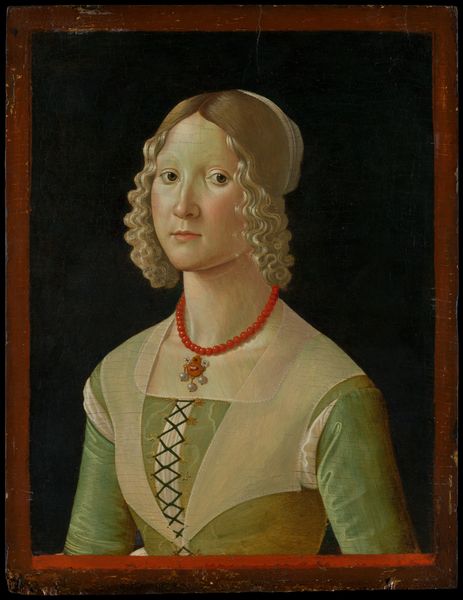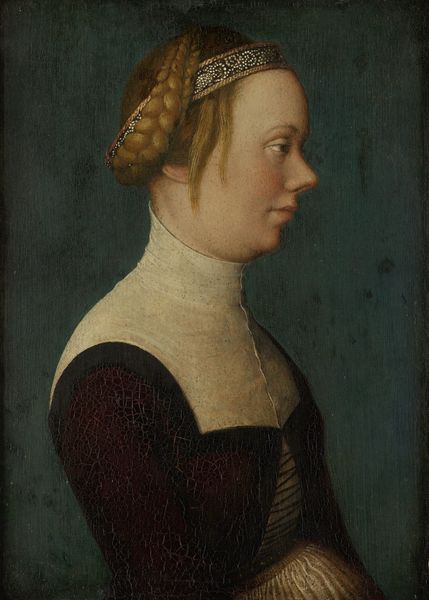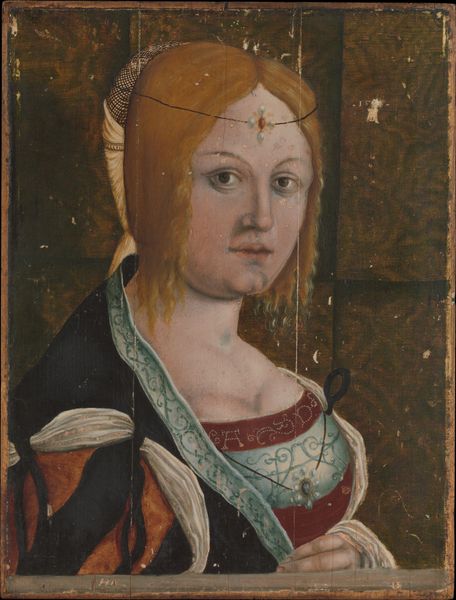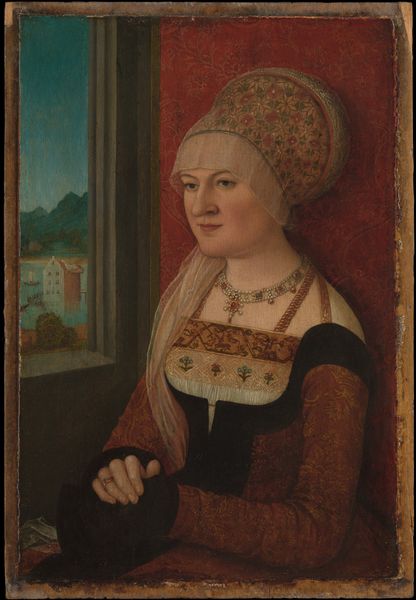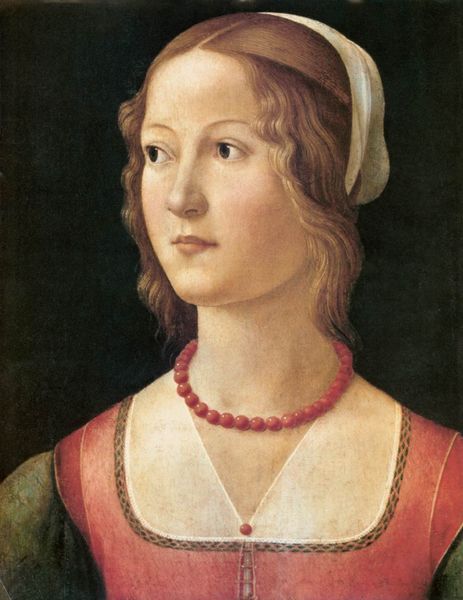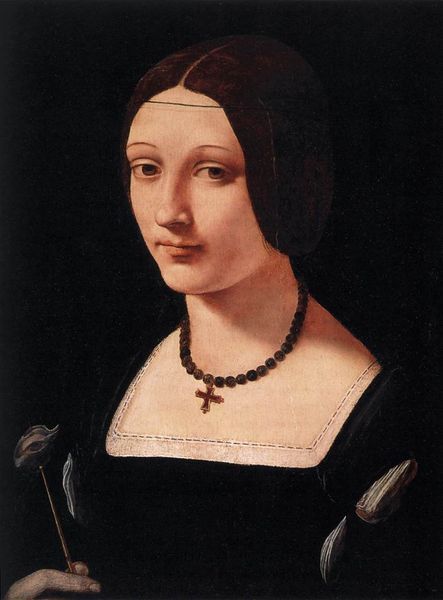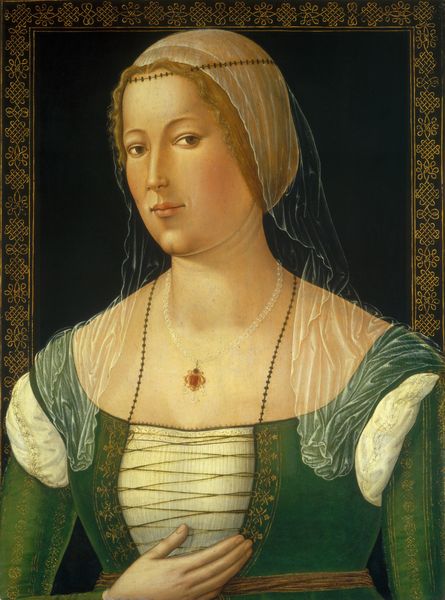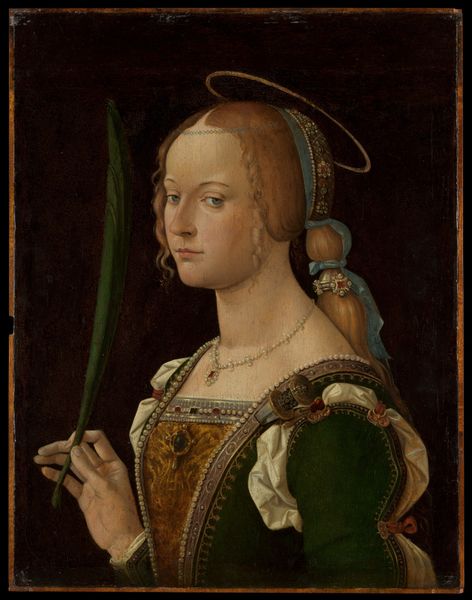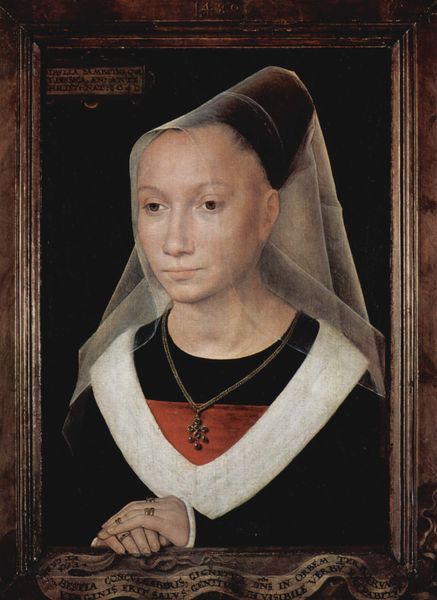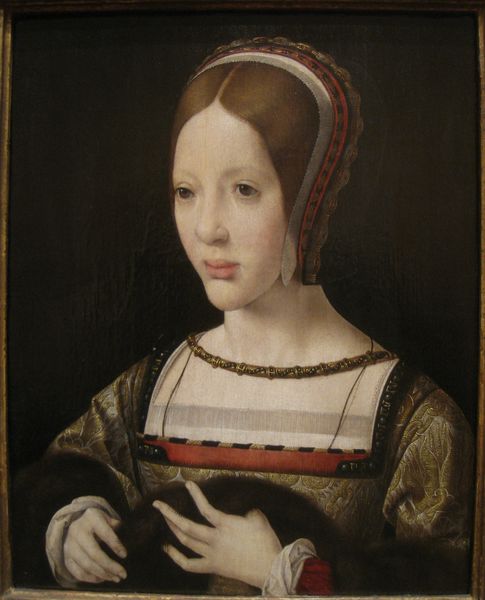
tempera, painting, oil-paint
#
portrait
#
tempera
#
portrait
#
painting
#
oil-paint
#
history-painting
#
northern-renaissance
#
italian-renaissance
#
italy
#
portrait art
#
realism
Dimensions: 16 13/16 x 11 3/4 in. (42.7 x 29.85 cm) (sight)17 3/8 x 12 3/8 x 1/4 in. (44.13 x 31.43 x 0.64 cm) (panel)
Copyright: Public Domain
Editor: So here we have a piece called "Portrait of a Woman," made around 1495 and attributed to Benedetto Ghirlandaio. It’s currently residing at the Minneapolis Institute of Art and it looks like it’s made using tempera on wood. She has a serious look; almost confrontational! What do you see in this piece? Curator: I see a work deeply embedded in the social fabric of its time. The portrait exemplifies the Renaissance shift toward individual representation but, significantly, also reflects the societal constraints placed upon women. Her clothing, jewelry, and even her hairstyle—likely dictated by fashion and marital status—speak volumes about her social standing. Who gets portrayed, and how, is always a political act. Editor: Political? How so? It just seems like a rich lady wanted her picture taken. Curator: Consider the institutional forces at play. Wealthy families, often merchants or politically connected, commissioned portraits to solidify their status, document lineages, and project power. The very act of commissioning and displaying this portrait would have served to reinforce her family's position in society. Ghirlandaio was painting her as part of a strategic cultural performance. Editor: So, it’s not just a picture, but a statement. What about the woman herself, do you think she had any agency in this "cultural performance?” Curator: That’s the key question, isn't it? While the painting adheres to certain conventions – the averted gaze, the idealized features - we can consider what choices were afforded to her within those constraints. Her presence here is both a reflection of and a participation in, the political landscape. Editor: I guess I never thought about portraiture in those terms. It's not just about the art; it’s about power. Curator: Exactly. And understanding the historical context reveals how art serves a public role, reflecting and shaping social norms. There’s always more to see if we consider history, even in something that, at first glance, appears simply to be pretty.
